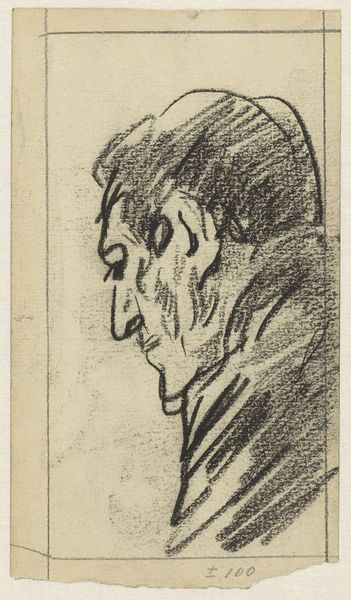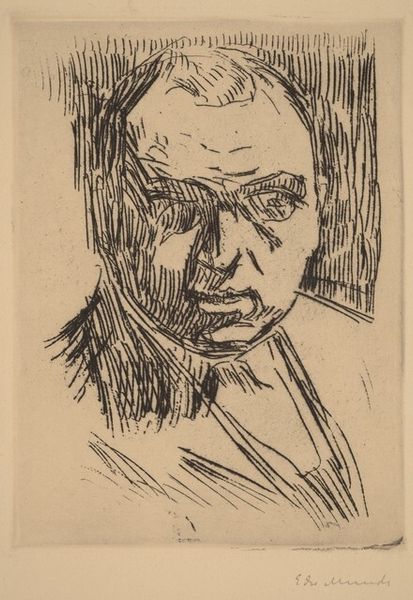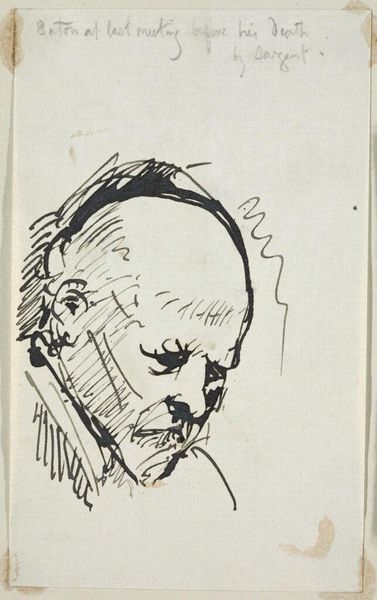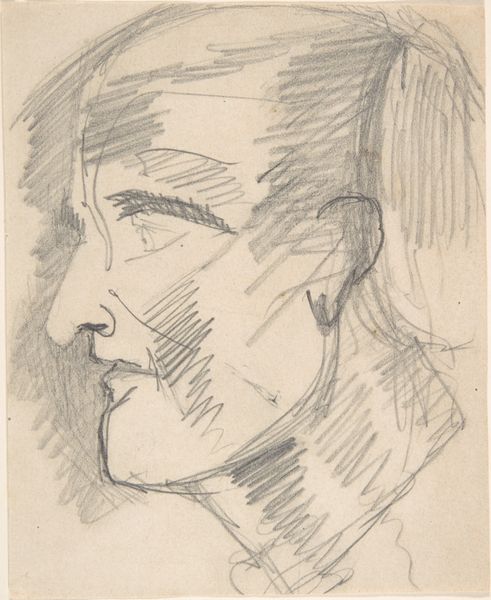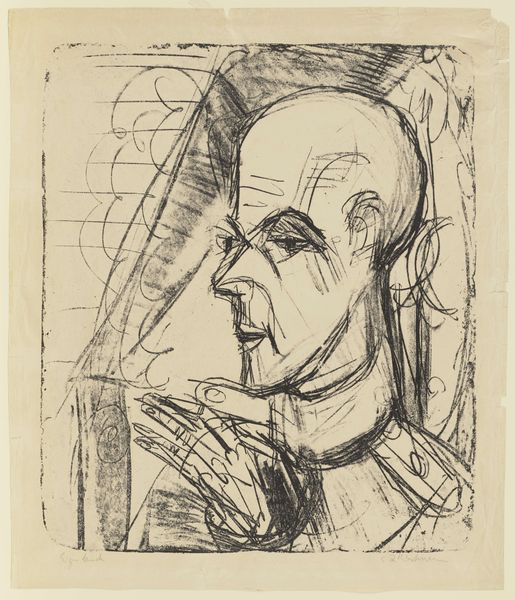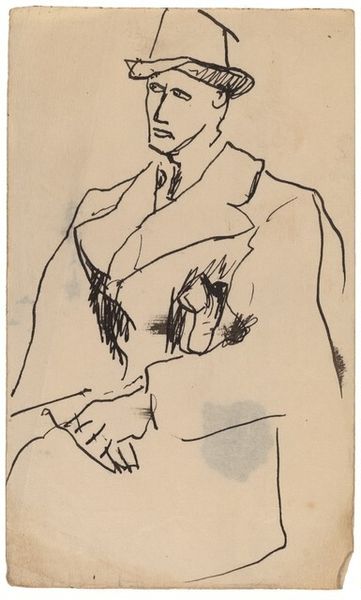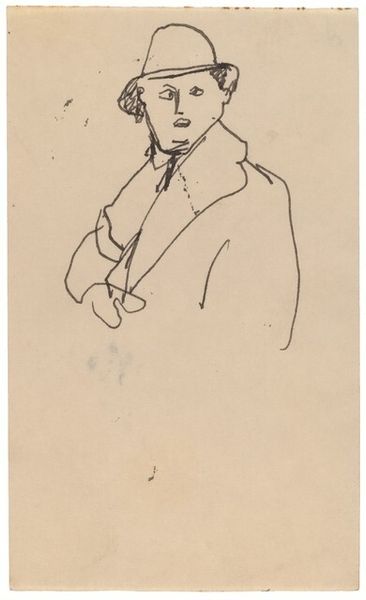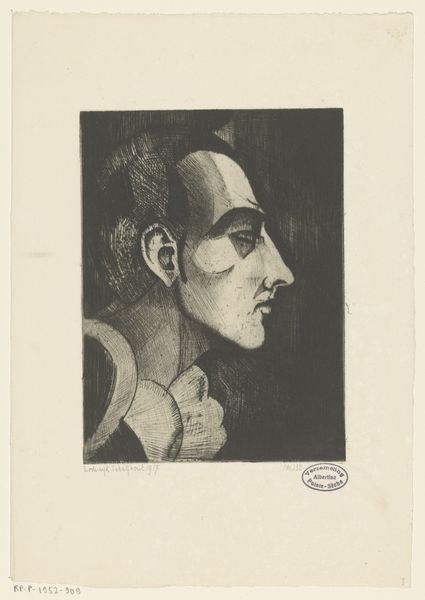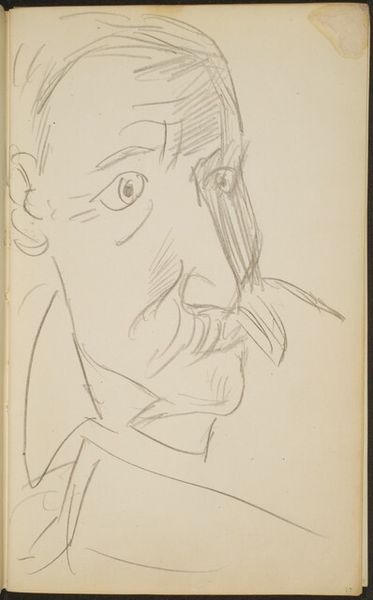
drawing, print, ink
#
portrait
#
drawing
# print
#
german-expressionism
#
figuration
#
ink
#
expressionism
#
portrait drawing
Copyright: National Gallery of Art: CC0 1.0
Editor: We're looking at Erich Heckel’s 1920 ink print, "Portrait of E.G." It's a striking image. I'm really drawn to the angularity of the lines and the stark contrast. It’s incredibly direct, almost unsettling. What do you see in this piece? Curator: Formally, I’m intrigued by the dynamic interplay of line and negative space. Note how the sharply defined contour of the subject’s face is juxtaposed with the more gestural, almost frenetic marks defining the surrounding space. The artist employs a strategic disjunction, fracturing the pictorial plane and unsettling any singular reading. What do you make of the relationship between the figure and ground? Editor: That makes me think about how the background isn't just 'background'. The strokes feel really deliberate and they give the portrait such an anxious energy. Do you think the dark and light contrast is important for setting a mood? Curator: Absolutely. The chromatic austerity of the black ink against the white ground amplifies the expressive intensity. Consider the psychological weight conveyed through the distortion of form – the elongated features, the almost mask-like quality of the face. Does this departure from naturalistic representation suggest a deeper exploration of inner states? Editor: I can see that. It’s interesting how he doesn’t seem to aim for an objective likeness but maybe aims to present the sitter’s feelings and thoughts. It definitely gives me a lot to think about! Curator: Precisely. The print’s structural elements, combined with its stark emotive power, offer a powerful testament to the capabilities of expressionist portraiture. I, too, find new details upon each encounter.
Comments
No comments
Be the first to comment and join the conversation on the ultimate creative platform.
